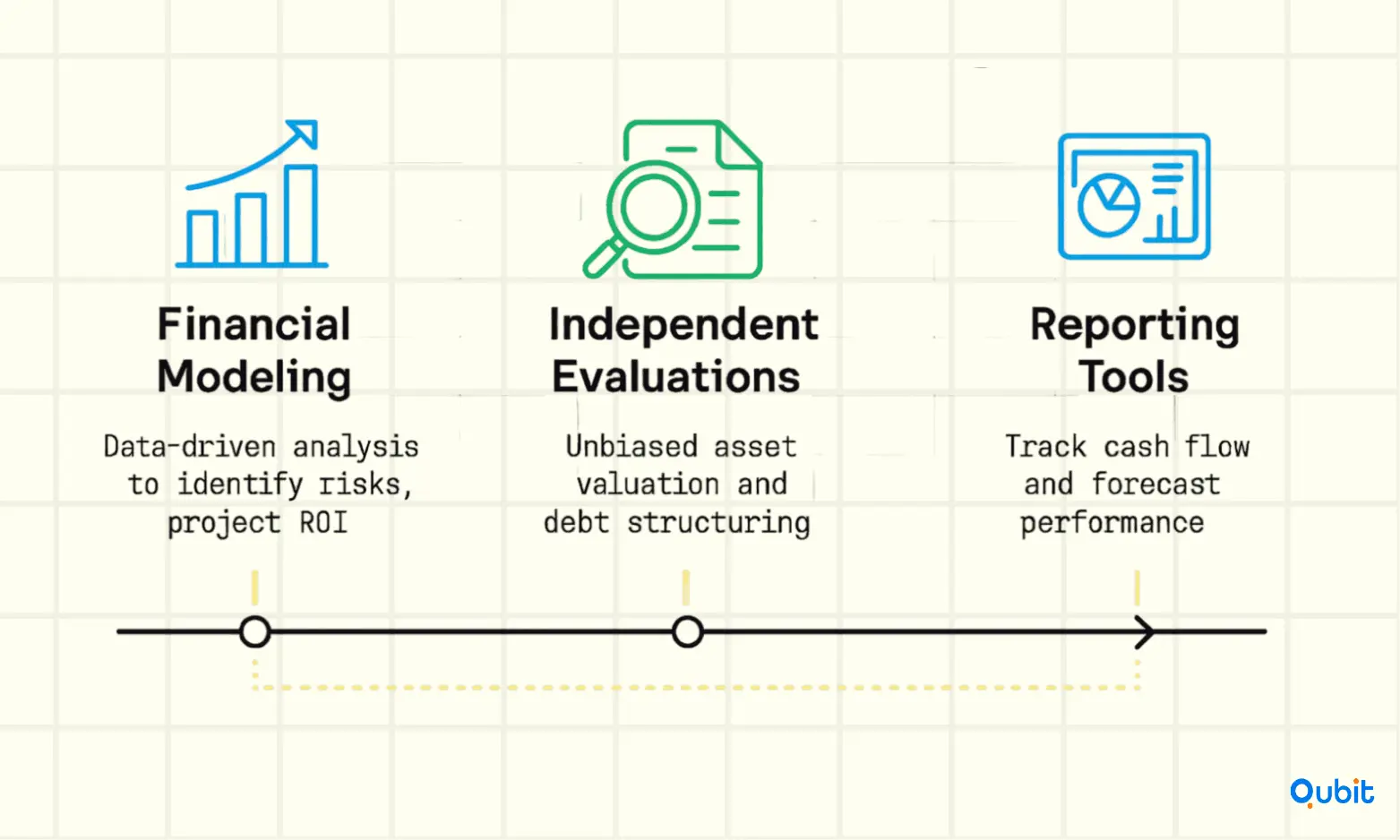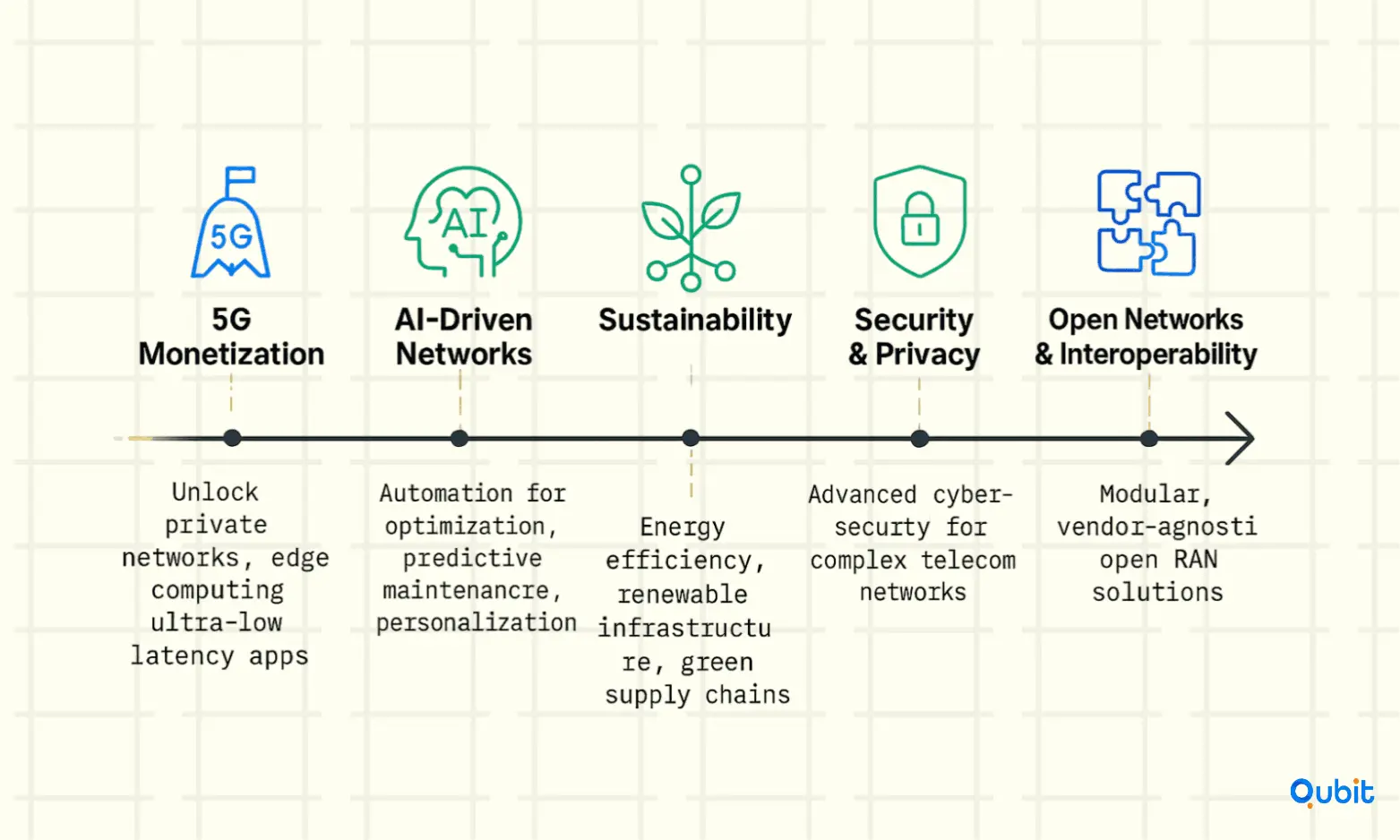Telecom operators and vendors face increasing pressure to adapt to rising capital expenditure (CAPEX) demands and shifting market dynamics. Strategic corporate investment in telecom has become a critical focus, offering pathways to balance operational expenditure (OPEX) while driving innovation and growth.
A focused analysis of alternative financing emerges in venture debt telecom startups, which details how venture debt mechanisms can support the evolution of telecom startups. This blog explores actionable insights into vendor management, technology transformation, and financial modeling strategies that can help businesses thrive in this competitive landscape.
Let’s jump right in!
Why Carriers and Vendors Invest in Startups
- Access to Innovation: Startups are often at the forefront of technological breakthroughs, AI-driven network optimization, IoT connectivity, cybersecurity, and 5G applications. Carriers and vendors invest to access these innovations early and stay ahead of the competition.
- Business Model Evolution: The shift from traditional voice and data services to digital platforms, cloud, and edge computing requires new business models. Startups provide fresh perspectives and solutions.
- Market Expansion: Startups can help carriers and vendors enter new markets or verticals, such as smart cities, autonomous vehicles, or digital health.
- Operational Efficiency: Integrating startup solutions can streamline operations, reduce costs, and improve customer experience (e.g., advanced Wi-Fi analytics for ISPs).
- Defensive Strategy: Investing in or acquiring disruptive startups can neutralize potential threats and prevent competitors from gaining an edge.
Strategic Telecom Investment & Transformation
Telecom operators face mounting challenges as they adapt to shifting market demands and technological advancements. Balancing capital expenditures (CAPEX) and operational expenditures (OPEX) has become a critical focus for sustainable growth. This section explores strategies that drive efficiency through tailored geolocated services, technology upgrades, and vendor management, while offering actionable steps to optimize spending.
Balancing CAPEX and OPEX for Long-Term Efficiency
Achieving a sustainable CAPEX-OPEX balance requires a clear understanding of demand patterns and cost structures. Telecom operators can start by conducting a thorough demand assessment to identify high-priority areas for investment. This ensures resources are allocated to initiatives that deliver the greatest impact.
Cost structure evaluation is equally important. By analyzing fixed and variable costs, operators can uncover opportunities to streamline operations and reduce unnecessary expenses. Benchmarking against industry standards provides valuable insights into competitive spending practices, helping operators refine their strategies further.
| Strategy/Action | CAPEX Impact | OPEX Impact | Key Metrics/Benchmarks | Objective/Benefit |
|---|---|---|---|---|
| Demand-Driven Investment Planning | Focuses spending on high-ROI areas | Reduces wasted operational resources | ROI on new assets, utilization rates | Maximize capital efficiency |
| Dynamic Cost Structure Evaluation | Identifies over/under-investment | Highlights savings in recurring expenses | OPEX per subscriber, cost per site | Streamline operations, reduce waste |
| Technology Lifecycle Management | Prioritizes scalable, future-ready tech | Lowers maintenance and upgrade costs | Total Cost of Ownership (TCO), asset lifespan | Reduce long-term costs, support growth |
| Integrated Vendor Management | Enables flexible, shared infra investment | Shifts costs to predictable OPEX streams | Vendor performance SLAs, contract flexibility | Optimize spend, improve vendor outcomes |
| Scenario Planning and Risk Mitigation | Protects against over-commitment | Ensures operational agility | CAPEX/OPEX ratio, scenario stress tests | Enhance resilience, adapt to change |
| Continuous Performance Monitoring | Refines allocation based on results | Tracks efficiency improvements | CAPEX-to-revenue, OPEX per user, asset ROI | Enable data-driven decision-making |
Leveraging Geolocated Services and Technology Upgrades
Tailored geolocated services offer a unique opportunity to enhance customer experience while optimizing resource allocation. By deploying location-specific solutions, operators can address regional needs more effectively, improving service delivery and reducing operational inefficiencies.
Technology upgrades, such as transitioning to 5G networks or adopting cloud-based systems, are another avenue for transformation. These upgrades not only enhance network performance but also enable operators to scale services more efficiently, reducing long-term costs.
Vendor Management: A Key Driver of Efficiency
Effective vendor management plays a pivotal role in telecom transformation. Collaborating with vendors to negotiate favorable terms and ensure timely delivery of services can significantly impact operational efficiency. Operators should prioritize partnerships that align with their strategic goals and offer scalable solutions.
Regional Insights: Middle Eastern Markets
The Middle Eastern telecom sector provides valuable lessons in sustainable spending. Operators in this region have successfully implemented geolocated services tailored to diverse demographics, driving customer satisfaction while optimizing costs. Additionally, strategic investments in technology upgrades have positioned these operators as leaders in innovation, showcasing the benefits of forward-thinking transformation strategies.
Your understanding of financing nuances is expanded through telecom funding instruments investor types, which outlines a spectrum of investment options and investor characteristics.
By adopting these actionable steps and insights, telecom operators can navigate the complexities of investment and transformation while maintaining a sustainable CAPEX-OPEX balance.
Telecom Capital Advisory and Financial Modeling
Effective capital advisory and precise financial modeling are critical for telecom businesses aiming to mitigate risks and maximize returns. These processes rely on data-driven analysis, independent valuations, and robust reporting tools to support strategic decisions, particularly in mergers and acquisitions (M&A).

The Role of Telecom Financial Modeling
Telecom financial modeling serves as the backbone for evaluating investment opportunities and preserving capital. By analyzing market trends, operational costs, and revenue projections, businesses can identify areas of risk and potential growth. This approach ensures that every financial decision is grounded in measurable data, reducing uncertainty and enhancing ROI.
Independent Evaluations for Strategic Decisions
Independent evaluations are essential for unbiased insights into a telecom company's financial health. These assessments provide clarity on asset valuation, debt structuring, and profitability, enabling stakeholders to make informed decisions during M&A processes or when seeking funding.
An overarching perspective is presented in how to secure funding for telecom startups, connecting macro-level strategies with more detailed analyses of investment approaches.
Comprehensive Reporting Tools
Advanced reporting tools streamline the process of tracking financial performance and forecasting future outcomes. These tools offer detailed insights into cash flow, operational efficiency, and market positioning, empowering telecom businesses to adapt their strategies in real time.
Investment Mechanisms
Direct Equity Investment
Carriers and vendors acquire minority or majority equity stakes in startups, often participating in seed, Series A, or later-stage rounds. These investments may come with board seats, governance rights, and strategic collaboration agreements.
Corporate Venture Capital (CVC) Funds
Many telecom giants have established dedicated CVC funds that operate similarly to traditional VCs but with a strategic mandate. These funds scout, evaluate, and invest in startups aligned with the parent company’s long-term vision.
Strategic Partnerships and Joint Ventures
Beyond equity, carriers and vendors may enter into joint development agreements, technology licensing, or co-marketing partnerships. These arrangements can accelerate product integration and go-to-market efforts.
Acquisitions and Mergers
When a startup’s technology or market position is deemed critical, carriers and vendors may opt for full acquisition, integrating the startup’s team and IP into their operations.
The Role of Corporate Venture Capital in the Telecom Ecosystem
Shaping the Startup
CVC arms are now among the most active investors in telecom innovation, often leading funding rounds and shaping industry standards. Their involvement signals market validation and attracts additional venture capital.
Collaboration Models
- Incubators & Accelerators: Many carriers and vendors run accelerator programs to nurture early-stage startups.
- Open Innovation Platforms: Initiatives like the Telecom Infra Project (TIP) foster collaboration between corporates, startups, and academia to co-develop new technologies.
- Hackathons & Challenges: These events help corporates scout talent and identify promising startups.
Notable Recent Deals
- ACT Fibernet’s investment in Aprecomm: ACT, a leading broadband provider, invested in Aprecomm, a startup specializing in AI-driven Wi-Fi analytics. This partnership aims to enhance ACT’s home Wi-Fi experience by integrating Aprecomm’s technology for real-time network visibility and proactive issue resolution.
- Deutsche Telekom’s investments: Through DTCP, Deutsche Telekom has backed cybersecurity and SaaS startups such as Axonius and participated in large rounds for cloud communication platforms like Dialpad.
- Verizon Ventures: Backed AI-powered startups like AiFi (autonomous retail) and participated in funding rounds for network optimization and big data analytics startups.
- SK Telecom: Invested over $7.2 billion in AI startups to bolster its digital transformation and AI-driven network services
Sustainability and ESG Integration in Telecom Investment
With rising regulatory and investor focus on environmental, social, and governance (ESG) criteria, integrating sustainability into telecom investment is now essential. This section would cover:
- Green CAPEX Initiatives: Investments in energy-efficient infrastructure (e.g., solar-powered towers, smart cooling systems).
- OPEX Reductions Through Sustainability: Lower energy and maintenance costs via green technologies.
- ESG Reporting and Compliance: Tracking emissions, resource use, and social impact as part of financial and operational reporting.
- Strategic Benefits: Enhanced brand reputation, regulatory incentives, and access to green financing.
Value Creation for Startups
Strategic Benefits
- Market Access: Startups gain access to the carrier’s or vendor’s customer base, distribution channels, and brand credibility.
- Product Validation: Collaborating with established players helps startups validate their technology at scale.
- Technical Resources: Access to advanced labs, testbeds, and engineering talent.
- Funding for Growth: Strategic investment often comes with follow-on capital and support for international expansion.
Potential Challenges
- Alignment of Interests: Strategic investors may prioritize their own roadmap, which can limit a startup’s flexibility.
- Integration Risks: Deep integration with a carrier’s systems can be complex and resource-intensive.
- Exit Constraints: Corporate investors may have rights of first refusal or vetoes on acquisition offers, potentially complicating exit strategies.
Global Perspective: Regional Hotspots
North America
The US remains a hotbed for telecom startup activity, with Silicon Valley and other tech hubs attracting investments from global carriers and vendors.
Europe
European carriers like Deutsche Telekom, Orange, and Swisscom are highly active, often focusing on cybersecurity, IoT, and cloud-native solutions.
Asia-Pacific
Carriers such as SK Telecom, SoftBank, and Singtel are driving innovation in 5G, AI, and IoT, with a particular emphasis on smart city and industrial applications.
Emerging Markets
Telecom startups in India, Africa, and Latin America are attracting investment as carriers seek to expand connectivity and digital services to underserved populations
Future Outlook: Trends Shaping Strategic Investment

1. 5G Monetization
Carriers are investing in startups that can unlock new revenue streams from 5G, such as private networks, edge computing, and ultra-low latency applications.
2. AI-Driven Networks
Automation and AI will continue to be a major focus, with startups offering solutions for network optimization, predictive maintenance, and personalized customer experiences.
3. Sustainability
Green telecom is rising in importance, with investments in startups focused on energy efficiency, renewable-powered infrastructure, and sustainable supply chains.
4. Security & Privacy
As networks become more complex, the demand for advanced cybersecurity solutions will drive further investment in this space.
5. Open Networks & Interoperability
The move towards open RAN (Radio Access Networks) and interoperable platforms is creating opportunities for startups to provide modular, vendor-agnostic solutions.
Conclusion
Transforming telecom investments requires a blend of strategic foresight and actionable insights. By balancing CAPEX allocation with innovative vendor management and technology upgrades, businesses can optimize their resources while staying ahead in a competitive market. The integration of data-driven frameworks and independent analysis ensures that corporate investments are not only well-informed but also aligned with long-term growth objectives.
At Qubit Capital, we specialize in guiding businesses through this journey. If you're ready to embark on a strategic investment journey, contact us to map the best-fit investment opportunities with our expert guidance.
Key Takeaways:
- Balanced CAPEX and OPEX planning is essential for strategic telecom investments.
- Localized service strategies and technology transformation drive operational efficiencies.
- Robust vendor management and strategic partnerships enhance ROI.
- Data-driven financial modeling and independent advisory reduce risks.
Frequently asked Questions
What are strategic corporate investments in telecom?
Strategic corporate investments in telecom involve carefully planned approaches to balancing capital expenditures (CAPEX) and operational expenditures (OPEX). These strategies often integrate innovative technologies and vendor partnerships to ensure sustainable growth and competitive advantage.


 Back
Back



